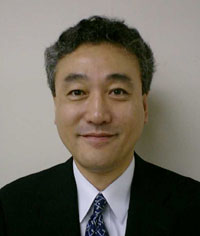
TITLE: Viewing the Brain as Control Systems
PRESENTER: Dr. Masao Ito
AFFILIATION: Brain Science Institute, RIKEN, Japan

BIOGRAPHY: Born in 1928. Graduated from Faculty of Medicine, University of Tokyo in 1953 and had postdoc training in Australia under Prof. J. C. Eccles (1963 Nobel prize). After being professor of physiology in University of Tokyo, he moved to RIKEN and directed the new RIKEN Brain Science Institute. He discovered exclusive inhibitory action of outputs from the cerebellum and long-term depression as a major learning mechanism of the cerebellum.
ABSTRACT: The spinal cord and brain stem form control centers for basic mechanistic functions such as reflexes, compound movements (for example, walking and mastication) and innate behaviors (for example, food intake and attack). The cerebral cortex contains the sensory/motor area for elaborate voluntary motor control and the association cortex for executive/cognitive functions. Living-like features are attached to these control functions by four regulators, namely, the brainstem sleep-wakefulness centers for recovery, cerebellum for adaptiveness, basal ganglia for ordered stableness, and limbic system for purposefulness. The cerebellum appears to form internal models based on its adaptive mechanism, which enable us to acquire skills in not only movements but also thoughts. The basal ganglia may orderly stabilize by choosing an appropriate one out of simultaneously generated many sets of action. Of the limbic system, the amygdala is responsible for stimulus-reward association and the hippocampus for spatiotemporal orientations. While animal behaviors can largely be reproduced by compounding these control and regulator functions, it will be a challenge to expand this strategy to explain mechanisms of human mental activities.
TITLE: Approach to Vehicle Safety
PRESENTER: Mr. Tomiji Sugimoto, Senior Chief Engineer
AFFILIATION: Tochigi R&D Center, Honda R&D Co., Ltd., Japan

BIOGRAPHY: Tomiji Sugimoto joined Honda Motor Co., Ltd. in 1977 and engaged in passenger safety technology development, mainly airbags, at Honda R&D Co., Ltd. in 1978. He worked for Honda R&D North America in LA from 1985 through 1989 and promoted the commercialization of airbags and the matters related to crash safety. Sugimoto also served as Chairman of Traffic Accidents Analysis Experts Group and is currently a member of Safety Subcommittee at JAMA. His researches won JSAE Awards and Award for Safety Engineering Excellence at Amsterdam ESV Conference in 2001. After holding Chief Engineer and Manager of Crash Safety Research Division, Sugimoto has been appointed Senior Chief Engineer in charge of safety technology since 2001.
ABSTRACT: Honda's approach to safety is stated, based on the current Japanese traffic accident condition and the economic loss.
The meaning of "safety" is fundamentally reconsidered to reduce personal and economic loss, and the concept for safety is explained by dividing accident process into three steps, prediction and prevention, accident avoidance, and passive safety. On that basis, Honda's attitude toward safety and the concept "safety for all people coexisting in mobility society, namely coexistence safety" are mentioned.
Safety is generally categorized as active safety and passive safety. However, here explains Honda's approach by separating the first area into recognition, judgement, and operation support technology, and also separating the second area into vehicle body technology and restraint system technology.
Recently, Honda has carried out the research and development, especially focussing on Car-to-Car crash research, technology for reducing pedestrian injury, and two-wheeled vehicles collision kinematics research as passive safety technology.
As to the active safety technology, Honda's aggressive approach is stated, toward the research and development on drive support technologies of ASV-2, such as Night Vision, Active Headlights, Motorcycle-Car Information Exchange System, Rear-end Collision Speed-Reduction Brake, Gridlock Tailgating, and HiDS, which is accelerating the correspondence to the safety in the real world.
Back to SICE Week Homepage.
Back to SICE 2003 Homepage.